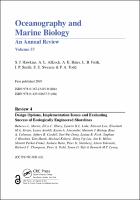Chapter 4 Design Options, Implementation Issues and Evaluating Success of Ecologically Engineered Shorelines
Proposal review
Author(s)
Morris, Rebecca L.
Heery, Eliza C.
Loke, Lynette H.L.
Lau, Edward
Strain, Elisabeth M.A.
Airoldi, Laura
Alexander, Karen A.
Bishop, Melanie J.
Coleman, Ross A.
Cordell, Jeffery R.
Dong, Yun-Wei
Firth, Louise B.
Hawkins, Stephen J.
Heath, Tom
Kokora, Michael
Lee, Shing Yip
Miller, Jon K.
Perkol-Finkel, Shimrit
Rella, Andrew
Steinberg, Peter D.
Takeuchi, Ichiro
Thompson, Richard C.
Todd, Peter A.
Leung, Kenneth M.Y.
Language
EnglishAbstract
Human population growth and accelerating coastal development have been the drivers for unprecedented construction of artificial structures along shorelines globally. Construction has been recently amplified by societal responses to reduce flood and erosion risks from rising sea levels and more extreme storms resulting from climate change. Such structures, leading to highly modified shorelines, deliver societal benefits, but they also create significant socioeconomic and environmental challenges. The planning, design and deployment of these coastal structures should aim to provide multiple goals through the application of ecoengineering to shoreline development. Such developments should be designed and built with the overarching objective of reducing negative impacts on nature, using hard, soft and hybrid ecological engineering approaches. The design of ecologically sensitive shorelines should be context-dependent and combine engineering, environmental and socioeconomic considerations. The costs and benefits of ecoengineered shoreline design options should be considered across all three of these disciplinary domains when setting objectives, informing plans for their subsequent maintenance and management and ultimately monitoring and evaluating their success. To date, successful ecoengineered shoreline projects have engaged with multiple stakeholders (e.g. architects, engineers, ecologists, coastal/port managers and the general public) during their conception and construction, but few have evaluated engineering, ecological and socioeconomic outcomes in a comprehensive manner. Increasing global awareness of climate change impacts (increased frequency or magnitude of extreme weather events and sea level rise), coupled with future predictions for coastal development (due to population growth leading to urban development and renewal, land reclamation and establishment of renewable energy infrastructure in the sea) will increase the demand for adaptive techniques to protect coastlines. In this review, we present an overview of current ecoengineered shoreline design options, the drivers and constraints that influence implementation and factors to consider when evaluating the success of such ecologically engineered shorelines.
Keywords
design; implementation; ecologically engineered shorelinesISBN
9780429026379OCN
1135848199Publisher
Taylor & FrancisPublisher website
https://taylorandfrancis.com/Publication date and place
2019Imprint
CRC PressSeries
Oceanography and Marine Biology : An Annual Review,Classification
Earth Sciences, Geography, Environment, Planning


 Download
Download